Why Writing Disorders Are Often Overlooked in School
Understanding the Invisible Barrier in Education
Writing disorders, particularly dysgraphia, represent a significant yet frequently overlooked challenge within school settings. Despite their profound impact on students’ academic success and emotional well-being, these disorders often remain hidden due to a combination of subtle symptoms, overlapping learning difficulties, and systemic gaps in awareness and assessment. This article explores why writing disorders are commonly missed in schools, the complexity of their diagnosis, and the critical importance of early intervention and support.
Why Writing Disorders Like Dysgraphia Often Remain Undetected in Schools
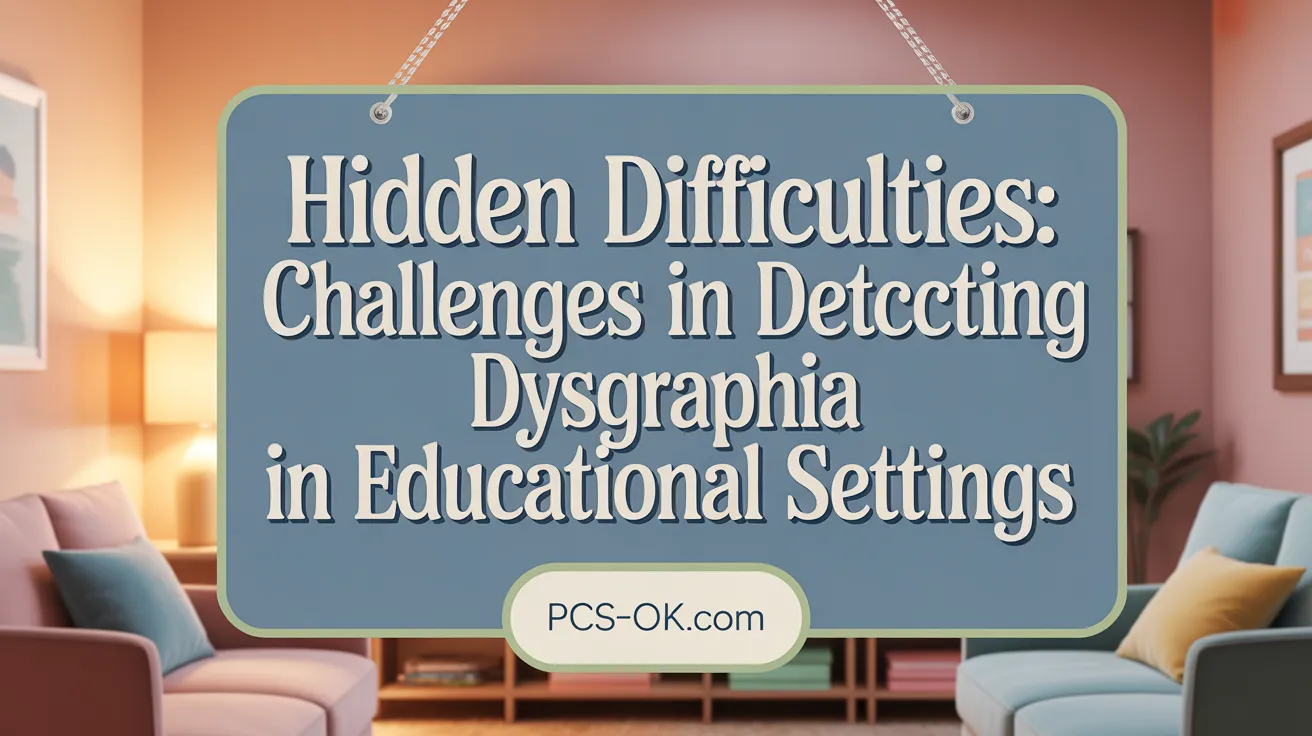
Why are writing disorders such as dysgraphia often overlooked in educational settings?
Writing disorders such as dysgraphia are frequently missed in schools because teachers and school staff may not be sufficiently aware of the disorder and its early signs. Dysgraphia can manifest with subtle symptoms like poor handwriting, inconsistent spacing, or slow writing speed, which teachers might dismiss as laziness or lack of effort. These misinterpretations can cause students to be unfairly labeled as careless or unmotivated.
Another barrier is the focus of educational assessments, which tend to emphasize reading and math over written expression. Standardized testing often overlooks handwriting quality, spelling accuracy, or writing organization, leaving signs of dysgraphia undetected.
The recent classification shift in the DSM-5 also impacts diagnosis. Dysgraphia is now considered a specific learning disorder under the broader category of neurodevelopmental disorders. This change sometimes leads to less emphasis on handwriting problems as a separate diagnosis, making early recognition in schools less consistent.
Assessment limitations play a significant role as well. Many school-based evaluations rely on general achievement tests that do not specifically examine handwriting or spelling skills. Without targeted assessments, children with dysgraphia might not be identified until much later.
Co-morbid conditions such as ADHD or dyslexia further complicate the picture. Teachers might attribute difficulties with writing or organization to these other disorders, making the underlying dysgraphia harder to diagnose.
Finally, the lack of systematic handwriting and spelling instruction in many classrooms contributes to the underdiagnosis. Many students are not receiving the explicit teaching needed to develop written skills, so their writing problems go unnoticed, especially if their reading and oral language skills appear adequate.
Diagnostic Challenges: Identifying Writing Disorders in Students

What challenges exist in diagnosing and identifying writing disorders in students?
Diagnosing writing disorders such as dysgraphia presents several complex challenges. One of the primary difficulties lies in the broad spectrum of symptoms, which often overlap with other learning difficulties like dyslexia, ADHD, and language processing disorders. This overlap can obscure the true nature of the problem, making it harder to pinpoint dysgraphia specifically.
Furthermore, there are no simple or specific medical tests to diagnose dysgraphia. Clinicians typically rely on handwriting evaluations, neuropsychological assessments, and analysis of how children produce written work. These evaluation methods can be subjective and vary depending on the child’s age, developmental stage, and individual presentation, which complicates the diagnostic process.
The symptoms of writing difficulties also change with age, making early detection particularly tricky. Young children might show subtle signs such as an awkward pencil grip, inconsistent letter formation, or slow writing speed—features that can be mistaken for normal development or lack of instruction. As children grow, the signs evolve, including problems with organization, spelling, and writing coherence, especially during transitions from learning to read to reading to learn.
Standardized diagnosis methods are complicated by the diversity in symptom presentation. There are no universally accepted, objective screening tools; instead, assessments often depend on subjective observations by teachers, parents, and specialists. This subjectivity can lead to inconsistent diagnoses across different settings.
Adding to the difficulty is the confusion between poor writing skills resulting from lack of instruction or motivation and actual neurodevelopmental disorders. Many children with genuine disorders are misinterpreted as lazy or careless, which delays appropriate support.
Given these challenges, a comprehensive, multidisciplinary approach is essential. This involves collaboration among teachers, school psychologists, occupational therapists, speech-language pathologists, and neuropsychologists. Such teamwork helps in understanding the child’s difficulties broadly and accurately identifying whether a true disorder like dysgraphia is present.
In summary, diagnosing writing disorders in students is hindered by overlapping symptoms, lack of specific medical tests, age-dependent variability, and the subjective nature of many assessments. Recognizing these challenges is vital to ensure earlier, more accurate diagnosis and intervention, ultimately improving educational outcomes for children with these disorders.
The Crucial Role of Awareness and Recognition in Addressing Writing Disabilities

How do awareness and recognition impact the neglect of writing disabilities?
Awareness and recognition of writing disabilities, such as dysgraphia, play a vital role in ensuring affected children receive the support and intervention they need. When educators, parents, and healthcare providers are knowledgeable about the signs of these disorders, they can identify issues early before they significantly impact a child’s learning and self-esteem.
Early detection allows for timely intervention, which can include specialized teaching strategies, occupational therapy, and accommodations like extra time or assistive technology. This proactive approach can improve outcomes and help children develop better writing skills.
However, low levels of awareness often lead to misconceptions. Many children with writing difficulties are mislabelled as lazy, sloppy, or unmotivated, rather than diagnosed with a learning disorder. This misunderstanding delays intervention and causes frustration for students and parents.
Furthermore, when writing disabilities go unrecognized, schools and support systems may not provide appropriate resources. Teachers might overlook subtle signs, especially since early symptoms can be mistaken for developmental variability or instructional gaps, particularly in contexts of limited literacy exposure or socioeconomic challenges.
As a result, many children progress through crucial educational years with unaddressed difficulties, which can exacerbate emotional distress, lower self-esteem, and academic failure. Recognizing the importance of awareness, schools should incorporate screening for written language difficulties early on, alongside assessments for co-morbid conditions like language impairments and attention disorders.
Increased public and professional awareness also helps to reduce stigma surrounding learning disabilities. When societal understanding improves, children with these challenges are more likely to be supported rather than discriminated against, fostering an inclusive environment conducive to learning and growth.
Resources and support access
Accessible resources, professional training, and community awareness campaigns are essential to improve recognition. Schools should ensure that teachers are trained to identify early signs of dysgraphia and related disorders.
Parents can benefit from educational programs that inform them about developmental milestones and warning signs of writing difficulties. Where awareness exists, children are more likely to receive tailored interventions, such as multisensory handwriting practice or technology-assisted instruction.
Ultimately, raising awareness and improving recognition are foundational to addressing writing disabilities effectively. They enable early intervention, reduce misconceptions, and open the door for children to access the necessary tools to succeed academically and personally.
Symptoms and Indicators That Often Lead to Underdiagnosis of Writing Disorders

What symptoms and indicators may lead to the underdiagnosis of writing disorders?
Many children with writing difficulties, such as dysgraphia, exhibit subtle and often inconsistent signs that are frequently overlooked by educators and parents. One common indicator is uneven or poor handwriting that is mistaken for laziness, carelessness, or lack of motivation. These children might also show excessive erasures or re-writing efforts, which can be misinterpreted as careless behavior rather than signs of underlying struggles.
Another important symptom involves spatial and organizational challenges. Children may have trouble maintaining proper spacing between words and letters or may struggle to align their writing within the lines consistently. Such difficulties can be misjudged as inattentiveness or lack of discipline rather than part of a developmental learning disorder.
Physical signs and developmental variability also contribute to underdiagnosis. For example, atypical pencil grip, slow development of fine motor skills, or awkward posture during writing tasks can be overlooked, especially if they are subtle or inconsistent. Children with spatial and motor challenges may also rely heavily on visual cues or templates, which can mask the difficulty they face during free writing tasks.
Behavioral cues like frustration, avoidance of writing activities, or signs of anxiety during assignments are often misinterpreted as behavioral issues or lack of effort. This misinterpretation can prevent early intervention. Additionally, physical signs such as arm or paper positioning that deviates from typical posture may go unnoticed, especially in young children still developing motor skills.
Age-related differences in symptom presentation complicate recognition as well. Younger children might show signs primarily through poor handwriting or difficulty copying from the board, while older children might struggle with organizing complex ideas or writing coherently, often attributed to attention issues or language difficulties.
Because many of these symptoms are subtle, inconsistent, or resemble typical developmental variability, lack of awareness and comprehensive assessment tools contribute to the persistent underdiagnosis of writing disorders in school settings.
The Impact of Subtle and Misunderstood Symptoms on Early Detection
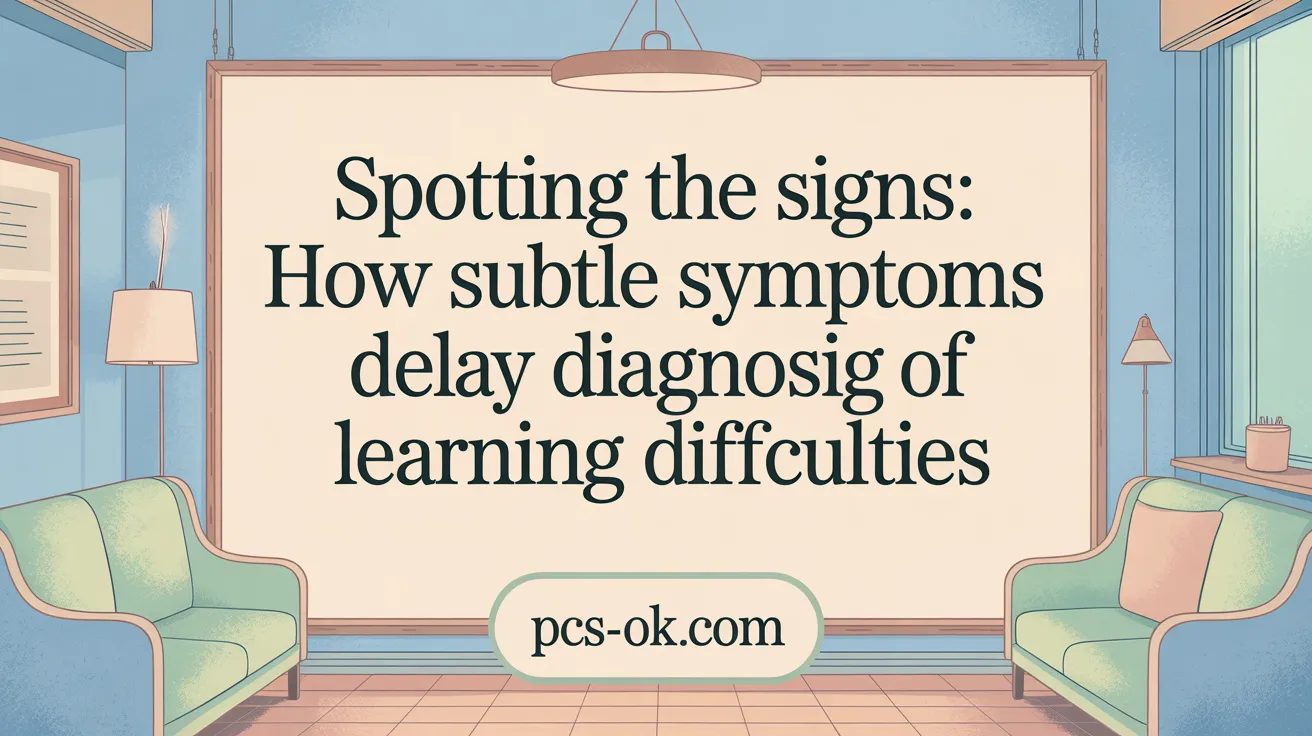
How do subtle or misunderstood symptoms affect the early detection of writing disorders?
Many children with dysgraphia and related writing difficulties show signs that are easy to overlook or misinterpret. In early childhood, symptoms like an awkward pencil grip, avoidance of writing activities, or inconsistent letter formation may be mistaken for lack of effort or poor instruction. As children grow, handwriting can become increasingly illegible or poorly organized, but teachers and parents often attribute these issues to laziness or lack of motivation rather than recognizing a learning disorder.
Symptoms can also change with age, making diagnosis more challenging. Preschoolers might struggle with phonological awareness, while older children may exhibit spatial disorganization or slow, inconsistent writing speed. These variations can hinder early identification because the signs are not always obvious or consistent.
Compounding this challenge is the high rate of co-morbidity with other neurodevelopmental and psychiatric conditions, such as ADHD, dyslexia, or language processing disorders. These overlapping issues can mask or overshadow handwriting problems, leading to an underestimation of the child’s difficulties in written expression.
In many cases, primary care providers and educators may lack specific training to recognize these subtle signs. Without comprehensive assessments that include screening for writing difficulties, many children miss their window for early intervention. This delay can result in missed opportunities to support developing skills effectively, which are crucial in preventing long-term academic, social, and emotional consequences.
Consequently, children may experience ongoing frustration, reduced self-esteem, and academic struggles. Recognizing and addressing these less obvious symptoms early can improve outcomes by providing targeted support, such as occupational therapy, specialized instruction, or adaptations like the use of assistive technology. The early detection of subtle signs is vital to ensure that children receive the help they need before difficulties become entrenched.
Why Early Identification and Intervention are Essential for Writing Disorders
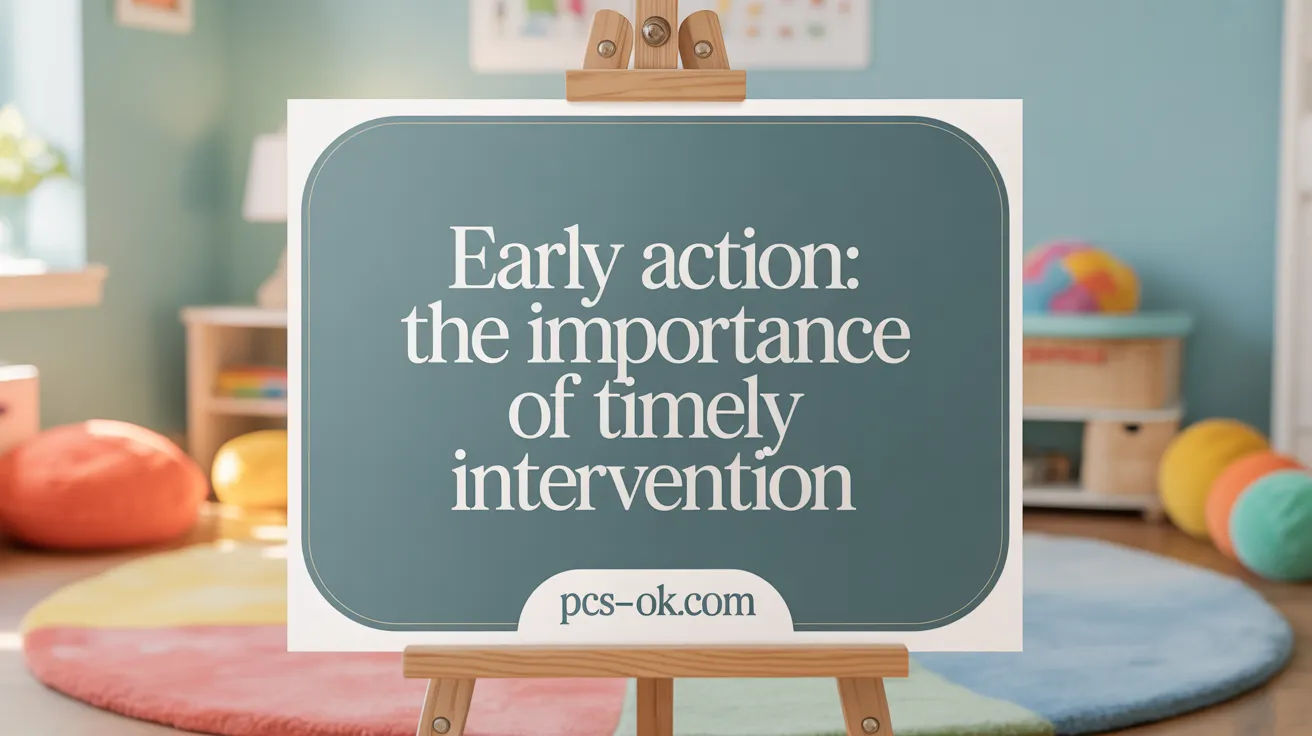
Why is early identification and intervention for writing disorders important?
Detecting writing difficulties at an early stage plays a vital role in improving a child’s academic performance and overall communication skills. When interventions are implemented promptly, they can prevent small challenges from escalating into more significant obstacles as the child progresses through school.
Early support helps children develop and strengthen critical foundational skills such as phonological awareness, decoding, spelling, and handwriting. These skills are not only necessary for effective writing but also underpin reading and learning across subjects.
Addressing these issues early also positively impacts cognitive growth by enhancing reasoning, language comprehension, and organizational abilities. Children with early intervention tend to perform better academically and can develop more sophisticated language skills, which contribute to success in multiple areas.
Furthermore, early recognition of speech and language challenges can improve social interactions and emotional health. Teachers and parents working together can help reduce feelings of frustration or inadequacy, fostering confidence and motivation for learning.
Intervening during preschool and early elementary years means children receive the tailored strategies they need when they are most receptive. Support measures, such as multisensory activities and explicit teaching of handwriting, speech, and language skills, directly impact long-term educational outcomes.
In summary, early identification and tailored interventions lay a solid foundation for lifelong literacy, confidence, and social success, significantly enhancing a child’s ability to communicate and learn effectively.
The Complex Relationship Between Writing Disorders and Other Learning Disabilities

What is the relationship between writing disorders and other learning disabilities?
Writing disorders, such as dysgraphia, rarely occur in isolation. They often coexist with other learning challenges, especially dyslexia and Attention Deficit Hyperactivity Disorder (ADHD). Studies show that between 30% and 50% of children with dysgraphia also have dyslexia or ADHD, highlighting significant co-morbidity.
The overlap between dysgraphia and dyslexia can lead to compounded difficulties. For example, a child may struggle with spelling, organizing written thoughts, and handwriting. These combined challenges can significantly hinder overall academic performance, making classroom learning more difficult.
Both dysgraphia and dyslexia are linked to weaknesses in working memory and language processing. They are neurological in origin and not related to intelligence. This means that even bright students can experience severe difficulties with writing and reading tasks.
Symptoms often extend beyond academic struggles, impacting emotional well-being. Children with multiple learning disabilities might experience anxiety, low self-esteem, and frustration due to their ongoing struggles.
Because these conditions can mask each other or be mistaken for lack of effort, comprehensive assessment is essential. Early diagnosis allows for tailored interventions, which are critical for helping children develop necessary skills and prevent long-term academic and emotional issues.
Understanding the complex interactions among these learning disabilities underscores the importance of multidisciplinary approaches, involving educators, psychologists, and speech-language pathologists, to support affected students effectively.
Educational and Historical Context: Evolving Recognition of Writing Disorders

How has the educational and historical context influenced the recognition of writing disorders?
The understanding and recognition of writing disorders such as dysgraphia and dyslexia have developed significantly over time, shaped by both scientific discoveries and social changes.
In the late 19th and early 20th centuries, early case descriptions and research laid the foundation for recognizing specific writing and reading difficulties. Terms like Kussmal’s “word-blindness” in the 1890s and Hinshelwood’s classifications in the early 1900s helped identify children with distinct learning challenges, often attributed to neurological causes.
Throughout the 20th century, social factors such as compulsory schooling laws and increased advocacy for children with special needs raised awareness of learning disabilities. These efforts fought against the misconception that reading difficulties were due solely to laziness or lack of effort.
Legal and educational reforms, particularly the passage of the Individuals with Disabilities Education Act (IDEA) in 1975, played a pivotal role. IDEA recognized specific learning disabilities (SLD), including difficulties with written expression, and mandated evaluations and accommodations for affected students.
Scientific advances also deepened understanding. Brain studies revealed the neurological basis of reading and writing disorders, reinforcing the concept that these are biological rather than behavioral issues. Techniques like the Orton-Gillingham approach, which focused on multisensory and explicit instruction, emerged as effective strategies for teaching children with learning disabilities.
Over time, diagnostic criteria have evolved from ocular and behavioral assumptions to include detailed assessments of phonological processing, orthographic coding, and working memory deficits. This shift helped distinguish types of dysgraphia and inform tailored interventions.
Today, a comprehensive view recognizes that learning disabilities in writing are complex, involving neurodevelopmental, cognitive, and environmental factors. The historical trajectory reflects a move from limited understanding to a nuanced, evidence-based approach that emphasizes early detection, supportive legislation, and individualized education plans.
In summary, the recognition of writing disorders has been shaped by a combination of scientific inquiry, legal mandates, and social advocacy, leading to improved diagnosis, awareness, and interventions for affected learners.
| Aspect | Historical Development | Impact on Recognition |
|---|---|---|
| Early Terms | Word-blindness, developmental dyslexia | Laid groundwork for identifying reading difficulties |
| Legislation | IDEA (1975), amendments | Ensured legal support and accommodations |
| Scientific Advances | Brain imaging, neuropsychology | Confirmed neurological basis of disorders |
| Instructional Methods | Orton-Gillingham, multisensory approaches | Improved teaching strategies |
| Diagnostic Criteria | From ocular-based to cognitive and neurological | Allowed precise identification |
| Social Advocacy | Special education laws, awareness campaigns | Increased recognition and resources |
Barriers Hindering Support and Accommodations for Students with Writing Disabilities

What barriers exist that hinder support and accommodations for students with writing disabilities?
Students with writing disabilities, such as dysgraphia, often face several obstacles that prevent them from receiving the support they need to succeed academically. One major barrier is inadequate teacher training. Many educators lack sufficient knowledge about recognizing writing disorders or implementing effective interventions, which can lead to overlooked or misdiagnosed cases.
Limited resources within schools are another significant challenge. Schools may not have access to specialized tools like speech-to-text software, visual organizers, or other assistive technologies that can aid students in overcoming handwriting and organizational difficulties. Pervasive stigma and ableism also play a role; misconceptions about learning disabilities can discourage families from seeking help or disclosing issues, fearing negative labels or lowered expectations.
Policy inconsistencies and complex documentation requirements further restrict access to necessary accommodations. Different districts or institutions may have varying procedures for obtaining assessments and support, making it difficult for students to receive consistent assistance. In higher education settings, these hurdles become more pronounced due to additional paperwork and stricter eligibility criteria.
Physical, sensory, and health-related challenges can also amplify difficulties if appropriate modifications are not made. Without tailored accommodations such as extended testing time, alternative assignment formats, or ergonomic tools, many students struggle to demonstrate their true capabilities.
Structural barriers are compounded by a general lack of awareness about effective strategies and accommodations, including the use of graphic organizers, assistive technology, or explicit handwriting instruction. To overcome these issues, the education system needs to promote comprehensive training for teachers, develop inclusive policies, and ensure the availability of accessible resources. Creating a supportive environment with proper understanding and tools can significantly improve educational outcomes for students with writing disabilities.
Understanding Dysgraphia: Neurological and Cognitive Foundations
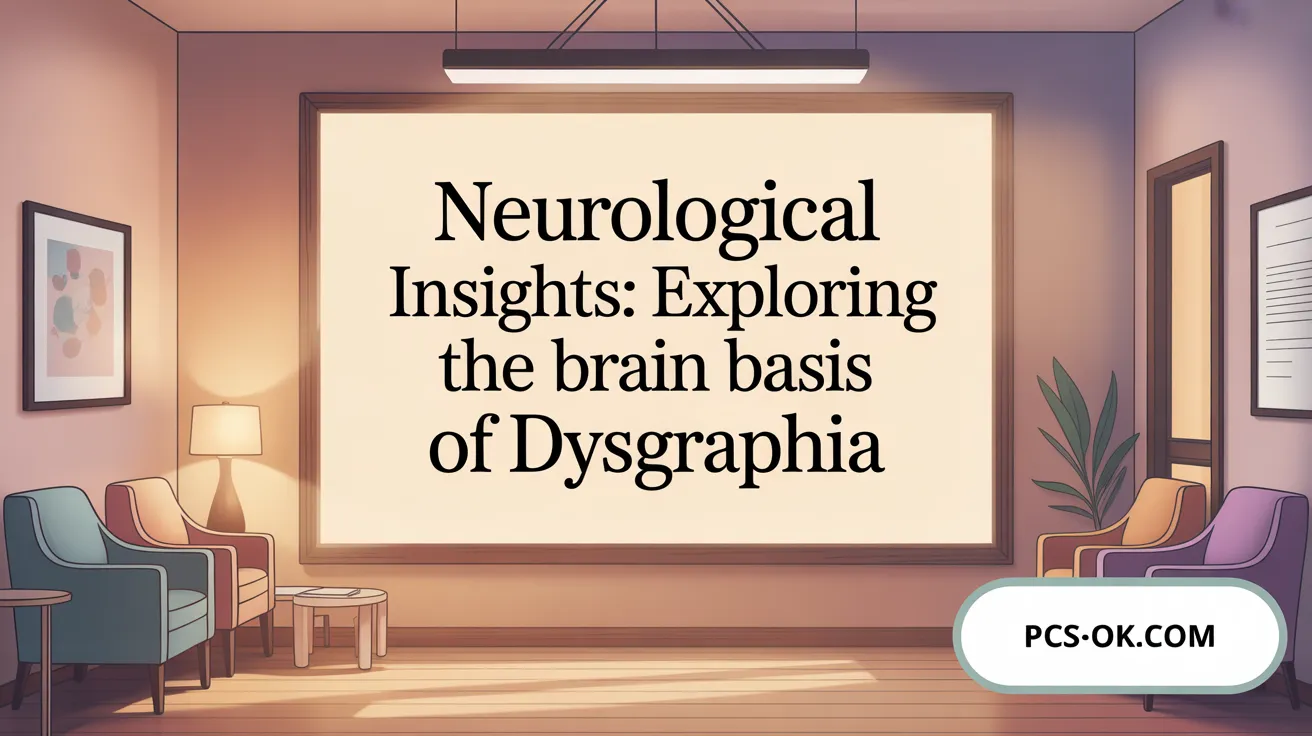
What is the neurological basis of dysgraphia?
Dysgraphia is primarily a neurological disorder that affects how the brain processes and produces written language. It results from disruptions in brain regions responsible for handwriting and language processing, often involving failure to develop the normal connections among these areas. This neurological mismatch leads to impaired handwriting, spelling, and the organization of written thoughts. Such difficulties are often visible when children first learn to write but can go unnoticed or misunderstood in classroom settings.
How do challenges in working memory and orthographic coding contribute?
Children with dysgraphia frequently struggle with weaknesses in working memory, which hampers their ability to store and manipulate information while writing. Orthographic coding, the brain’s capacity to store and recall the visual patterns of written words, is also affected. These deficits make it difficult to remember letter sequences, spelling words correctly, or produce coherent sentences, ultimately impacting their written expression and reading comprehension.
How is dysgraphia distinct from fine motor skill disorders?
While dysgraphia involves neurological factors affecting the production of written language, it is not the same as weak fine motor skills or developmental fine motor disorders. Fine motor difficulties are physical coordination problems often seen in children with conditions like cerebral palsy. Dysgraphia, on the other hand, stems from brain function issues related to language and writing, although they can sometimes coexist, leading to confusion in diagnosis.
What role do genetic and developmental factors play?
Research indicates that genetics and brain development significantly influence dysgraphia. It often results from a failure to develop the typical neural pathways involved in writing and language processing. These neurodevelopmental factors, combined with potential genetic predispositions, contribute to the disorder’s manifestation. Early identification of these underlying issues can enable tailored interventions to improve writing skills.
| Aspect | Details | Additional Notes |
|---|---|---|
| Neurological origin | Brain connection failures affecting writing and language | Essential for diagnosis and intervention planning |
| Working memory | Difficulty storing/manipulating written info | Impacts spelling, organizing thoughts, coherence |
| Orthographic coding | Challenges recalling visual word patterns | Affects spelling accuracy and reading comprehension |
| Distinct from motor issues | Not primarily about physical motor skills | Clarifies focus for targeted therapy |
| Genetic and developmental | Influences brain pathway formation | Highlights importance of early detection |
Understanding these neurological and cognitive components of dysgraphia underpins the need for specialized assessment and intervention strategies, helping children overcome these challenges and succeed academically.
Common Symptoms and Diverse Types of Dysgraphia
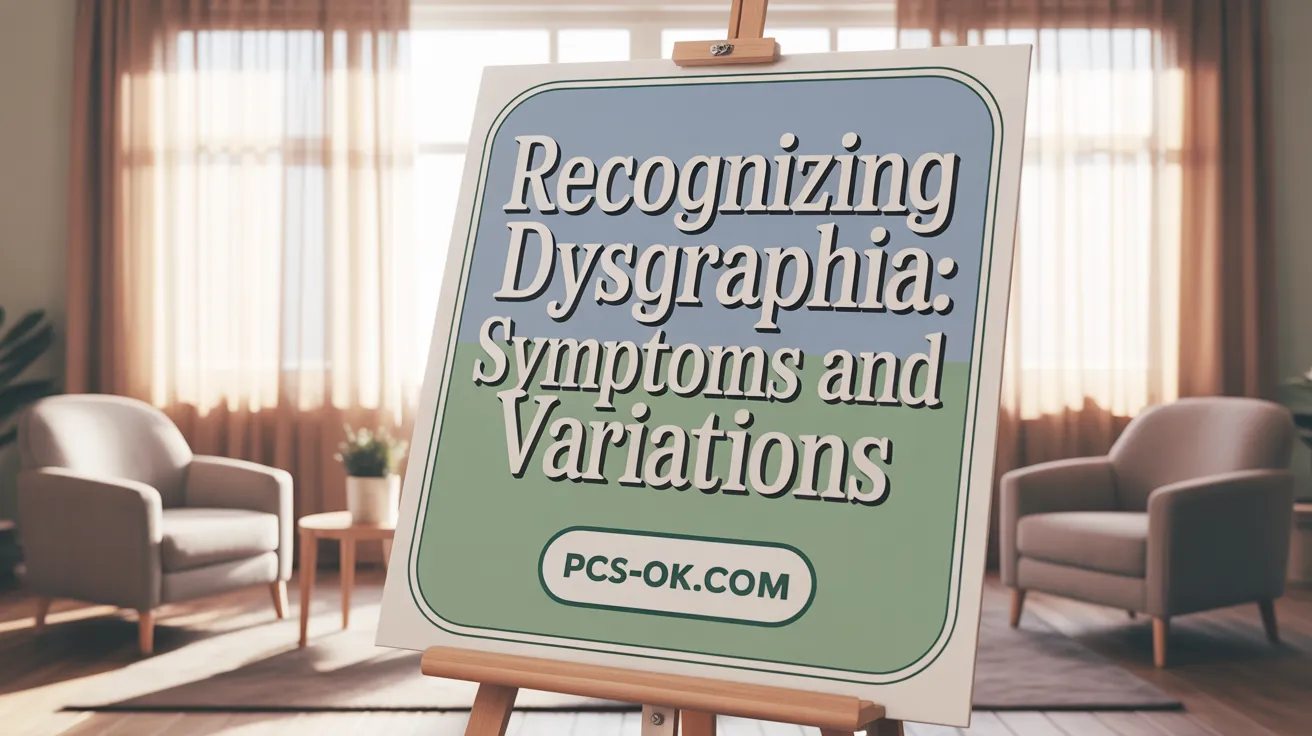
What are the signs of dysgraphia?
Children with dysgraphia often show difficulties in multiple aspects of writing. Poor handwriting is a hallmark, with letters that may be inconsistent, illegible, or poorly formed. They might struggle with proper spacing between words and lines, leading to cramped or uneven text.
Writing speed is frequently slow, which can cause frustration and hinder the completion of assignments within typical time limits. Spelling errors are common, especially with irregular words, even in students who have good reading skills.
Expression in written form can be challenging. Children may find it hard to organize their thoughts logically, resulting in incomplete sentences or fragmented ideas. They often subvocalize or repeat words silently while writing to help decode or remember spelling, which can further slow their writing process.
What are the different types of dysgraphia?
Dysgraphia isn’t a one-size-fits-all condition; it has several forms, each with distinct features:
| Type of Dysgraphia | Characteristics | Underlying Challenges |
|---|---|---|
| Motor Dysgraphia | Poor handwriting, shaky or inconsistent letter formation | Weak fine motor skills and hand muscle control |
| Dyslexic (Linguistic) Dysgraphia | Errors in spelling, letter reversal, inconsistent handwriting | Language processing and orthographic coding weaknesses |
| Spatial Dysgraphia | Difficulties with letter size, spacing, and alignment on the page | Challenges in visual-spatial organization |
Recognizing these subtypes helps tailor interventions, whether through occupational therapy, phonological training, or visual-spatial exercises.
How do these symptoms impact learning?
Students with dysgraphia often face hurdles not just in handwriting but also in reading comprehension and overall academic performance. Slow or illegible writing can slow down note-taking, test-taking, and completing homework.
Understanding these signs early and providing appropriate support can significantly improve educational outcomes and self-esteem. Recognizing the diverse nature of dysgraphia ensures targeted interventions that address specific weaknesses, enhancing the child’s ability to communicate effectively through writing.
The Overlap Between Dysgraphia, Speech, and Language Impairments
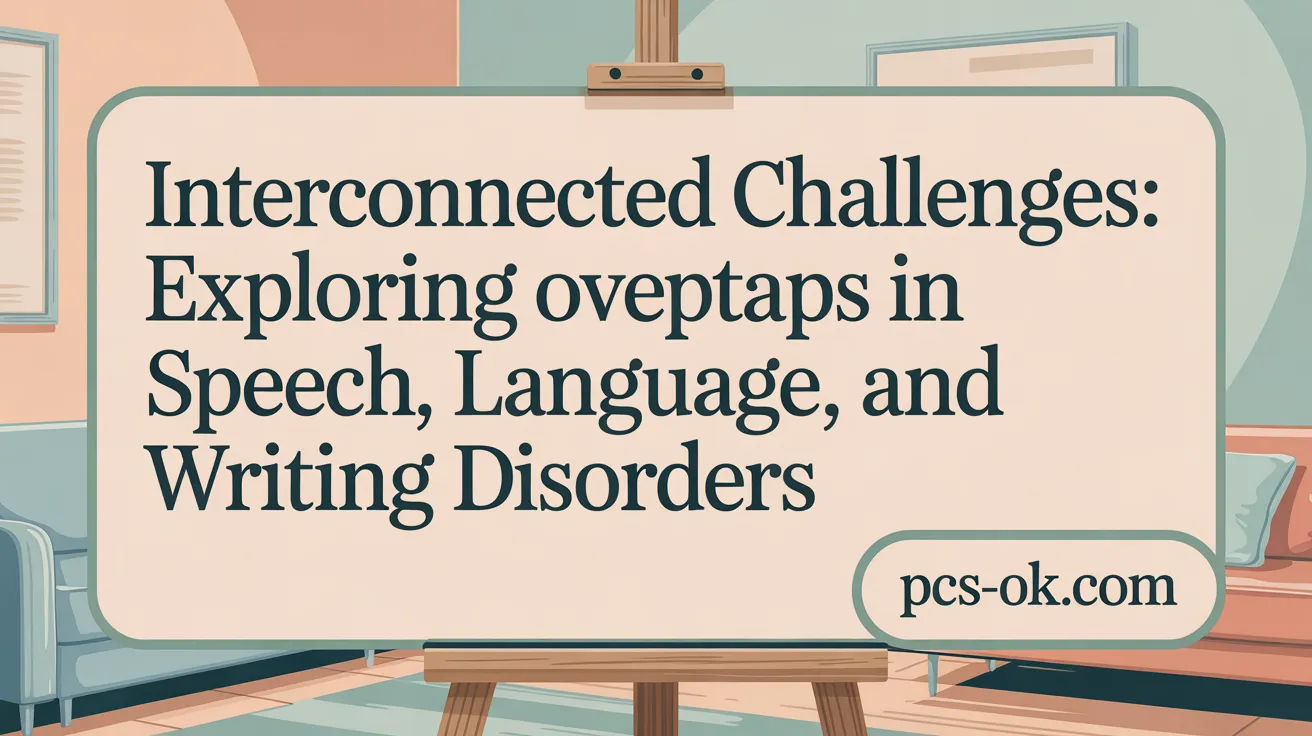
Why are children with speech impairments more prone to writing disorders?
Research highlights that children with speech and language impairments often have higher rates of writing difficulties, including dysgraphia. About 25% of children with language impairments struggle with reading by the end of kindergarten, and many also face challenges with handwriting, spelling, and organizing their written work.
This overlap occurs because speech and writing skills share foundational processes such as phonological awareness—the ability to recognize and manipulate sounds within words. Difficulties in identifying sounds or segmenting words can hinder both spoken language and written expression.
How do phonological awareness deficits affect literacy?
Children with phonological impairments, like those with verbal dyspraxia, often struggle with sound segmentation, rhyme detection, and blending sounds—skills essential for decoding words and spelling. These deficits make it harder to connect sounds to letters, impeding both reading and spelling development.
For example, a child may recognize a word visually but have trouble decoding its phonetic structure, resulting in slow or incorrect reading. Similarly, poor phonological skills may cause bizarre or illogical spelling errors, as children lack the ability to analyze sounds systematically.
What is the impact on reading and spelling?
Because reading and spelling are related but distinct skills, children with speech and phonological difficulties might excel in reading comprehension but struggle with spelling, or vice versa. Persistent issues with phonological awareness translate into difficulties in phoneme-grapheme correspondences, leading to challenges in encoding and decoding words.
These struggles can affect overall literacy development, leading to frustration and lower self-esteem if not addressed early. Later, such difficulties may also impact written expression, especially in composing organized and coherent texts.
Why is the role of speech-language pathologists crucial?
Speech-language pathologists (SLPs) are vital in early identification and intervention. They assess phonological processing, speech production, and language skills, providing targeted therapies to improve foundational skills. Early intervention with explicit phonics, phonological awareness training, and letter-sound instruction can greatly enhance literacy outcomes.
Creating a collaborative approach involving educators, SLPs, and parents ensures comprehensive support, reducing the risk of long-term literacy and writing problems. Recognizing the connection between speech impairments and writing difficulties underscores the importance of early comprehensive assessment and tailored intervention programs.
Assessment Strategies for Effective Identification of Writing Disorders
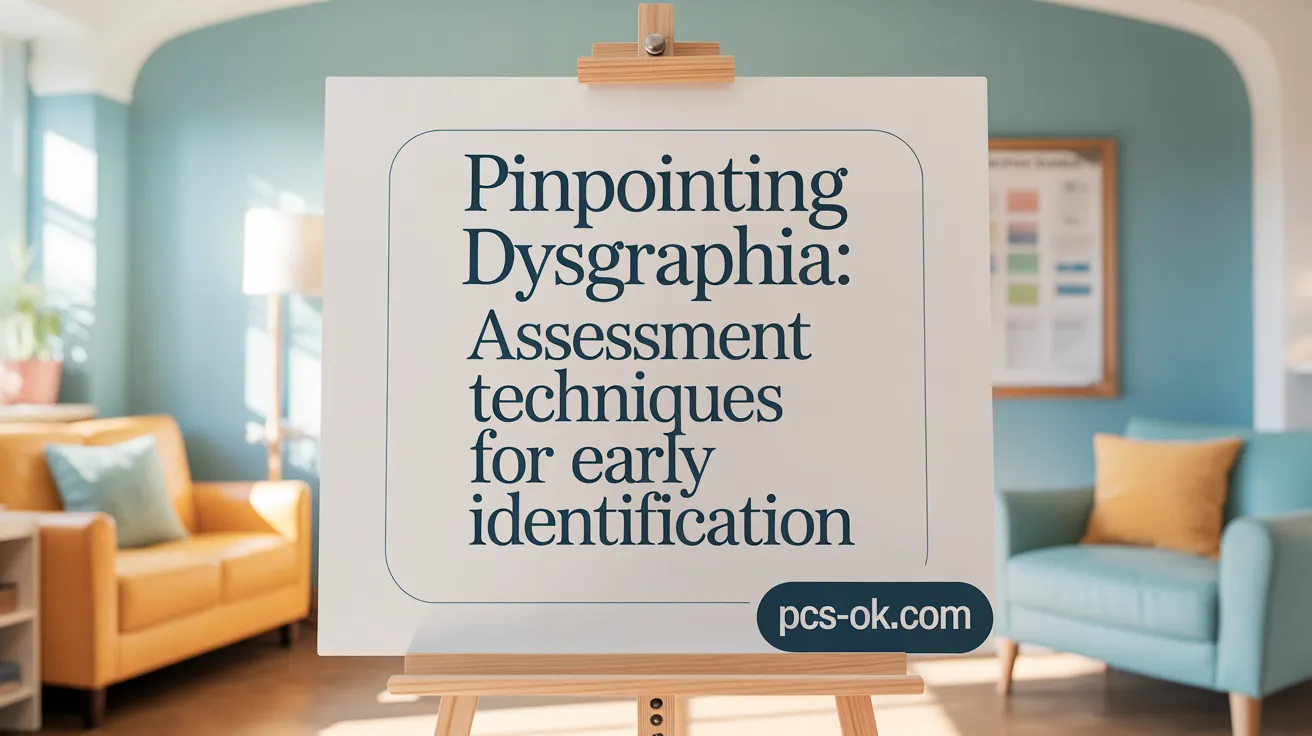
What are the formal and informal evaluation methods used?
Assessing dysgraphia and related writing disorders involves a combination of formal and informal methods. Formal assessments include standardized tests focused on handwriting, spelling, and written expression, along with cognitive assessments that evaluate working memory and orthographic coding. These tools help quantify the severity and specific aspects of writing difficulties. Informal evaluations involve classroom observations, analysis of student writing samples, and interviews with teachers, parents, and the students themselves. These methods provide context and help identify behaviors such as inconsistent handwriting, trouble organizing ideas, or slow writing speed that might not be evident through standardized tests alone.
How do school psychologists and specialists contribute?
School psychologists and learning disabilities specialists play a critical role in the assessment process. They conduct comprehensive evaluations that consider cognitive functioning, language skills, and motor abilities. Their expertise ensures that the diagnosis accurately reflects whether a child has dysgraphia, a co-occurring disorder like dyslexia, or another learning challenge.
They also interpret test results to distinguish between different types of dysgraphia, such as motor or spatial dysgraphia. Moreover, these specialists collaborate with teachers, speech-language pathologists, and occupational therapists to develop tailored intervention plans.
Why is a multi-factorial assessment important?
A multi-factorial approach considers various influences on a child’s writing ability. Factors like intelligence, language skills, motor coordination, and emotional health all interplay to affect writing development. Assessments that examine these areas help prevent misdiagnosis, such as labeling a child as lazy or unmotivated when the issue is neurological.
This comprehensive view helps educators and clinicians formulate targeted strategies, ensuring that interventions address the root causes rather than just symptoms.
Why is screening for co-morbid conditions critical?
Many children with dysgraphia also experience other learning or psychiatric disorders, including dyslexia, language processing issues, or ADHD. Screening for these co-morbidities early on is vital because it influences the intervention approach and improves long-term outcomes.
Identifying accompanying conditions allows for a more holistic approach, providing support across multiple domains of learning. Early screening in preschool or kindergarten can detect foundational issues like phonological awareness deficits or weak executive functioning, reducing the risk of ongoing academic struggles.
| Evaluation Method | Focus Area | Additional Notes |
|---|---|---|
| Standardized Tests | Handwriting, spelling, writing | Quantifies specific deficits and strengths |
| Classroom Observations | Writing behaviors | Provides context and real-time insight |
| Cognitive Assessments | Memory, orthographic coding | Highlights underlying neurological processing issues |
| Teacher/Parent Interviews | Functional difficulties | Gathers information on daily challenges and frustrations |
| Multidimensional Approach | Overall developmental profile | Ensures comprehensive understanding for tailored interventions |
By combining these strategies, educators can more accurately identify children with dysgraphia and related disorders, paving the way for effective support and improved academic success.
Intervention and Support Techniques to Facilitate Writing Success

Practice Methods: Tracing, Copying, and Dictating
To help children overcome writing difficulties, practitioners often recommend various practice activities. Tracing allows children to develop fine motor control and letter formation by following predefined paths. Copying exercises help reinforce correct letter shapes, spacing, and line alignment. Dictation tasks encourage children to translate spoken words into written form, improving spelling and handwriting flow. These activities provide structured opportunities for children to build confidence and consistency in their writing.
Use of Occupational Therapy and Multisensory Learning
Occupational therapy can address underlying fine motor and sensory processing issues that contribute to dysgraphia. Therapists utilize multisensory learning approaches, engaging visual, auditory, and tactile senses to reinforce handwriting skills. For example, children may trace letters in sand, use textured surfaces, or incorporate movement-based activities to enhance muscle memory. These methods make learning more engaging and can significantly improve handwriting automaticity.
Accommodations: Technology, Extra Time, and Modifications
Assistive technologies such as speech-to-text software, word processors with spell check, and electronic drawing tools can ease the writing process. Providing additional time for written tasks reduces pressure and allows children to organize their thoughts without rushing. Modifications like breaking longer assignments into smaller segments or allowing oral explanations in lieu of handwritten submissions can further support student success. These adjustments help create an inclusive learning environment tailored to individual needs.
Strategies to Reduce Frustration and Build Participation
Creating a positive and encouraging classroom atmosphere encourages children to participate actively despite their writing challenges. Using games, drawing activities, and real-world projects can make writing more enjoyable. Explicitly teaching self-regulation and frustration management techniques helps students develop perseverance. Providing frequent praise for effort and progress boosts self-esteem and motivates continued practice.
| Practice Method | Purpose | Additional Notes |
|---|---|---|
| Tracing | Develop motor control | Use different mediums like sand or textured paper |
| Copying | Reinforce letter forms | Gradually increase complexity |
| Dictation | Improve spelling and flow | Combine with visual aids |
| Occupational Therapy | Address underlying motor issues | Focus on multisensory, tactile approaches |
| Tech Supports | Facilitate writing | Employ speech-to-text and digital tools |
| Classroom Strategies | Enhance participation | Use engaging activities, positive reinforcement |
Adopting these targeted interventions and accommodations can make a significant difference in helping children with dysgraphia develop confidence and independence in their writing skills.
The Role of Policy and Legislation in Supporting Students with Writing Disabilities

How IDEA Defines Specific Learning Disabilities
The Individuals with Disabilities Education Act (IDEA) of 2004 classifies Specific Learning Disabilities (SLD) as a neurological disorder that affects the way children understand or use language, impacting skills such as reading, writing, spelling, and math. This legal framework recognizes dysgraphia as a form of SLD, emphasizing that these learning challenges are not due to lack of effort, but rather underlying neurological issues.
Why Maintaining the SLD Category Matters
Keeping SLD as a category under IDEA is crucial because it ensures students with these specific difficulties receive appropriate recognition and tailored educational services. Without this designation, many children might be misunderstood, labeled as lazy or unmotivated, which can hinder their academic growth and affect self-esteem.
Proposed Changes to Screening and Identification Processes
Recent proposals aim to refine how schools identify and support students with SLD. These include emphasizing a comprehensive, multi-faceted evaluation process that considers background, prior interventions, and social-emotional factors. The goal is to move beyond solely standardized tests and incorporate multiple procedures such as observing patterns of strengths and weaknesses, thereby allowing for earlier and more accurate diagnoses.
How Policy Affects Educational Accommodations
Clear legislation directly influences the availability of accommodations like extra time, assistive technology, and modified assessments, crucial for students with writing disabilities like dysgraphia. Proper policy ensures these supports are accessible and consistently implemented, helping students participate fully and succeed academically.
| Aspect | Policy Impact | Benefits |
|---|---|---|
| Definitions of SLD | Clarifies scope and encourages accurate diagnoses | Better identification and tailored interventions |
| Identification procedures | Promotes comprehensive assessments | More timely and precise support for students |
| Educational accommodations | Mandates provision of support services | Enhances learning opportunities and reduces frustration |
Understanding and reinforcing these legal frameworks is essential for improving educational outcomes for students with writing disabilities, ensuring they receive the support necessary to thrive.
Addressing the Invisible: Towards Better Recognition and Support
Writing disorders like dysgraphia represent a hidden struggle for many students, complicated by subtle symptoms, overlapping conditions, and systemic gaps in awareness and assessment. Schools often miss early signs due to these factors, delaying intervention and exacerbating academic and emotional challenges. Enhancing educator training, improving assessment protocols, fostering awareness, and implementing inclusive policies are essential steps toward recognizing and supporting students with writing disabilities. Early identification and tailored interventions not only improve academic attainment but also empower children to overcome barriers and build confidence for lifelong success. Recognizing these disorders as critical components of learning diversity is fundamental to creating an equitable and effective educational environment.
